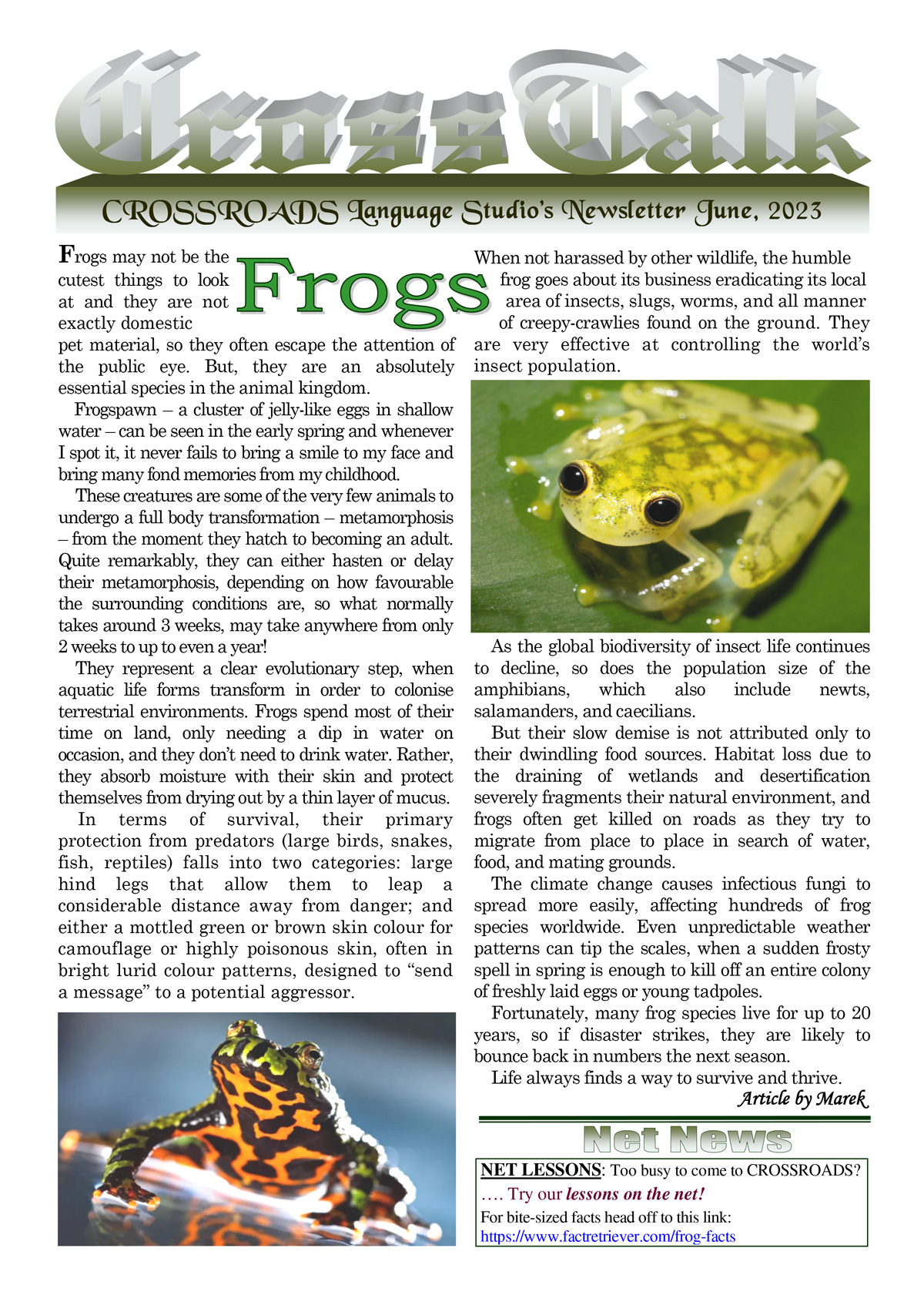CROSSROADS Language Studio’s Newsletter June, 2023 Frogs

Frogs may not be the cutest things to look at and they are not exactly domestic pet material, so they often escape the attention of the public eye. But, they are an absolutely essential species in the animal kingdom.
Frogspawn – a cluster of jelly-like eggs in shallow water – can be seen in the early spring and whenever I spot it, it never fails to bring a smile to my face and bring many fond memories from my childhood.
These creatures are some of the very few animals to undergo a full body transformation – metamorphosis – from the moment they hatch to becoming an adult. Quite remarkably, they can either hasten or delay their metamorphosis, depending on how favourable the surrounding conditions are, so what normally takes around 3 weeks, may take anywhere from only 2 weeks to up to even a year!
They represent a clear evolutionary step, when aquatic life forms transform in order to colonise terrestrial environments. Frogs spend most of their time on land, only needing a dip in water on occasion, and they don’t need to drink water. Rather, they absorb moisture with their skin and protect themselves from drying out by a thin layer of mucus.
In terms of survival, their primary protection from predators (large birds, snakes, fish, reptiles) falls into two categories: large hind legs that allow them to leap a considerable distance away from danger; and either a mottled green or brown skin colour for camouflage or highly poisonous skin, often in bright lurid colour patterns, designed to “send a message” to a potential aggressor.
When not harassed by other wildlife, the humble frog goes about its business eradicating its local area of insects, slugs, worms, and all manner of creepy-crawlies found on the ground. They are very effective at controlling the world’s insect population.
As the global biodiversity of insect life continues to decline, so does the population size of the amphibians, which also include newts, salamanders, and caecilians.
But their slow demise is not attributed only to their dwindling food sources. Habitat loss due to the draining of wetlands and desertification severely fragments their natural environment, and frogs often get killed on roads as they try to migrate from place to place in search of water, food, and mating grounds.
The climate change causes infectious fungi to spread more easily, affecting hundreds of frog species worldwide. Even unpredictable weather patterns can tip the scales, when a sudden frosty spell in spring is enough to kill off an entire colony of freshly laid eggs or young tadpoles.
Fortunately, many frog species live for up to 20 years, so if disaster strikes, they are likely to bounce back in numbers the next season.
Life always finds a way to survive and thrive.
Article by Marek
CROSSROADSのNews letterをPDFでダウンロード
CROSSROADSのスタッフから、最新のトピックスやメッセージなどを毎月お届けしています。クロスワードパズルなどのコーナーもあります。






